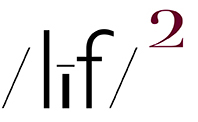covers
intro spread
The next iteration - the most difficult part of the total project - is to write text for the book which reflect my views, re: the medium of photography and its apparatus, and a discourse, re: my eye sensibilities and how they drive my picture making - the referents I choose, how I picture them, and my intentions for doing so. For all intents and purpose, a story about my life in photography.
My objective in writing that text is to create a how-to (of sorts) which addresses the audience of picture makers who are looking to break out of the confines of making pictures which they have been told are good pictures by helping them find their own way of seeing. It is my belief that many "serious" picture makers have arrived "at a technical plateau where production of a technically good photograph is relatively easy" and "It is here that real photography starts and most photographers quit" ~ Brooks Jensen - Things I've learned about photography.
Those picture makers are well past the point of technique / "mastering" something or another how-to books. They are looking for some guidance regarding going beyond / "forgetting" about the techincal and gear stuff and moving on to a place in their picture making where they can discover and experieince the joy / pleasure/ satisfaction of making pictures that evidence their own personal manner of seeing.
My intent is to create a book which appeals to that audience of seekers and consequently to a publisher which might interested in publishing it.

